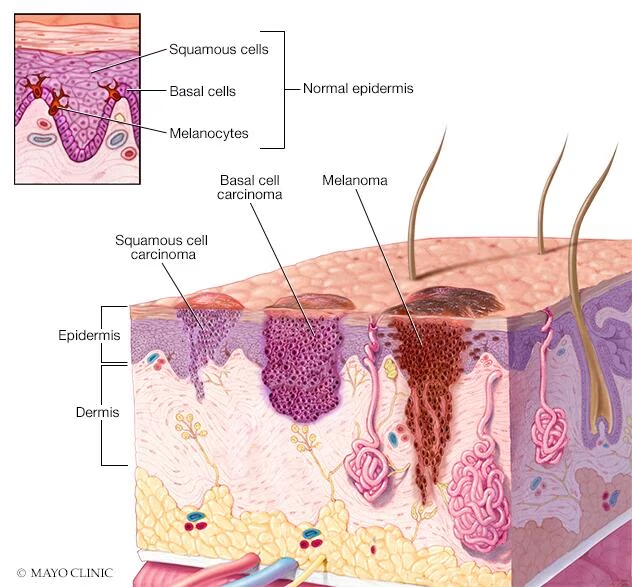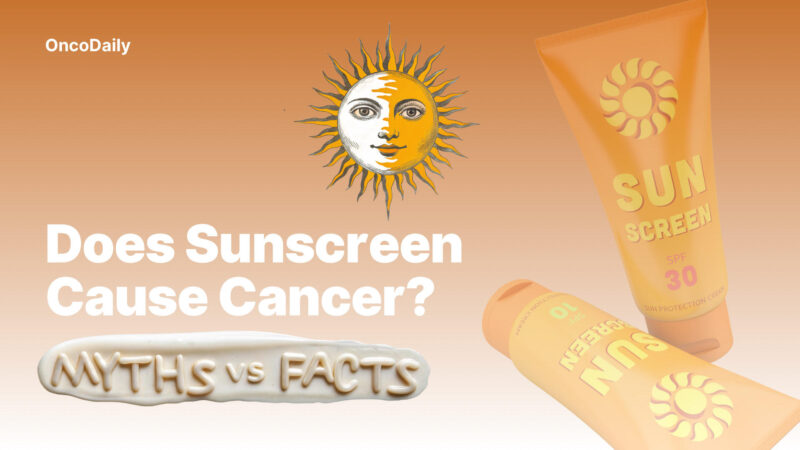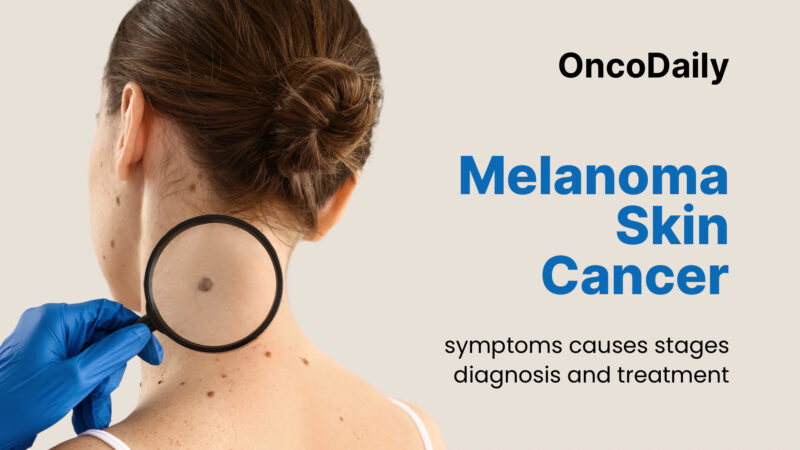WWE legend and actor John Cena announced on March 31, 2025, that he has overcome skin cancer twice, shedding light on his past neglect of sunscreen and skin care. Diagnosed during routine dermatological checkups, Cena had cancerous spots removed from his chest and shoulder. Now an advocate for sun safety, he uses his platform to urge others to protect their skin and prioritize early detection.

How Was John Cena Diagnosed with Skin Cancer?
John Cena was diagnosed with skin cancer during routine dermatological check-ups, highlighting the importance of regular screenings and sun protection. The first cancerous spot was discovered on his right pectoral muscle during a routine visit to the dermatologist and was promptly removed. A year later, a second spot was identified and removed from his right shoulder. Cena later shared that he hadn’t prioritized sun protection in his younger years, which likely contributed to the development of these skin cancers. His experience serves as a reminder of the long-term impact of sun exposure and the importance of preventative care.
What was John Cena’s Reaction to the Skin Cancer Diagnosis?
Cena admitted that receiving the diagnosis was a deeply unsettling experience. In an interview with People magazine, he described the moment he got the news as unpredictable and frightening, saying,
“Man, that phone call’s not what you want to get because it is unpredictable and you don’t know how bad it’s going to be.”
His mind instinctively went to the worst-case scenario, imagining dire outcomes even before understanding the full scope of his condition.

Why Is John Cena Reflecting on His Younger Years Now?
The diagnosis forced Cena to confront his past neglect of sun protection. He reflected on his upbringing in Massachusetts, where sunscreen was not part of his routine, and later in Florida, where he stubbornly avoided adopting protective habits despite prolonged sun exposure. He admitted thinking the problem would never reach him, only to realize that years of minimal protection had caught up with him.
What Role Did Doctors Play in John Cena’s Cancer Journey?
Cena credited his dermatologist for providing critical emotional support during this difficult time. He described how his dermatologist “held me by the hand and let me know that I wasn’t alone”, which helped him process the overwhelming statistics surrounding skin cancer. This human-to-human connection was vital in helping Cena navigate the fear and uncertainty of his diagnosis.
Despite imagining worst-case scenarios, Cena adopted a mindset focused on improvement and resilience. He shared his philosophy:
“How can we be better today than we were yesterday?”
This approach allowed him to move forward with gratitude for being able to “dodge two bullets” while using his experience as a reminder to prioritize self-care.
John Cena’s Sunscreen Advocacy
Cena partnered with a major skincare brand to promote a new line of sunscreens, particularly a formula designed to apply invisibly without leaving a white cast. The collaboration was inspired by his iconic “You Can’t See Me” gesture, now widely recognized in pop culture. The campaign, titled “Sunscreen You Can’t See,” highlights the importance of daily sunscreen use, regardless of weather or season.
Cena’s advocacy particularly targets men, who often neglect preventive health measures. Dermatologists note that men are less likely to request skin exams compared to women, often waiting until visible problems arise. Cena’s message aims to change this mindset by encouraging men to take proactive steps in protecting their skin.

WrestleMania 41: John Cena Wins 17th Title with Help from Travis Scott
John Cena made history by winning his 17th WWE World Championship at WrestleMania 41 on April 20, 2025, in Las Vegas, surpassing Ric Flair’s previous record of 16 world titles and becoming the most decorated professional wrestler of all time. He defeated Cody Rhodes in the main event at Allegiant Stadium, in front of a crowd of over 63,000 fans, securing the Undisputed WWE Championship.
The match was intense and dramatic, with Cena using a more aggressive, villainous style, including a low blow and striking Rhodes with the championship belt to gain the victory. The rapper Travis Scott made a surprise appearance, assisting Cena by distracting the referee and interfering during critical moments, which helped Cena secure the win.
Cena had announced last year that he plans to retire from in-ring competition by the end of 2025, and this victory is part of his farewell tour. Despite speculation that WrestleMania 41 might be his final match, his win indicates he will remain active for a while longer. Cena expressed his love for wrestling and acknowledged the difficult choice of stepping away to focus more on his acting career.
What Cause Skin Cancer?
Skin cancer risk is influenced by both environmental and genetic factors. Prolonged UV exposure, chemical contact, infections, and certain medical treatments all contribute to increased vulnerability, especially in outdoor workers and older adults. Genetics also play a key role—people with fair skin, a family history of skin cancer, or weakened immune systems face higher risks. Understanding these factors is essential for prevention and early detection.
Environmental and Lifestyle Factors
Exposure to environmental factors plays a significant role in increasing skin cancer risk. Ozone depletion allows more ultraviolet (UV) radiation to reach the Earth’s surface, intensifying the potential for skin damage. Geographic location also matters—people living at higher altitudes or closer to the equator are exposed to stronger UV rays. Additionally, prolonged sun exposure over a lifetime, especially without proper protection, contributes to the cumulative risk of developing skin cancer, making age a non-negligible factor.
Occupations that involve working outdoors, such as farming or construction, further increase risk due to constant UV exposure. Exposure to certain chemicals, including arsenic, coal tar, and industrial substances, has been linked to higher rates of skin cancer. Viral infections, particularly with specific strains of the human papillomavirus (HPV), are also associated with the development of squamous cell carcinoma.
Smoking has been directly linked to squamous cell carcinoma, especially on the lips, while other lifestyle choices such as diet may influence skin health, although their direct connection to cancer is less clear. In some cases, chronic wounds, scars, or inflammatory skin conditions can evolve into cancerous lesions, particularly squamous cell carcinoma. Medical treatments like radiation therapy, phototherapy, and PUVA (psoralen combined with ultraviolet A light) may also increase susceptibility to skin cancer by damaging skin cells over time.
Genetic and Biological Factors
Genetic predisposition plays a critical role in skin cancer risk. Individuals with fair skin, light-colored eyes, and red or blond hair are more vulnerable due to lower levels of melanin, the pigment that helps protect skin from UV damage. These individuals absorb more UV radiation and experience more DNA damage when exposed to the sun. A family history of skin cancer, particularly melanoma, further elevates the risk, indicating an inherited susceptibility.
Immune system function is another important factor; people with compromised immune systems, such as those undergoing organ transplants or living with HIV/AIDS, have a diminished ability to repair DNA damage, leading to higher rates of skin cancer. This combination of inherited traits and immune suppression underscores the importance of personalized risk assessments and preventive strategies for those at higher genetic risk.
You Can Also Read Hugh Jackman and Skin Cancer: How He Went Against, How He Survived, and More by Oncodaily

How Prevent Skin Cancer?
Preventing skin cancer involves a comprehensive approach to reduce exposure to ultraviolet (UV) radiation, including seeking shade during peak hours, wearing protective clothing like long sleeves and hats, applying broad-spectrum sunscreen with SPF 30 or higher daily, avoiding tanning beds, and conducting regular skin checks for early detection.
Protect Your Skin from UV Radiation
To protect your skin from harmful UV radiation, it’s important to take a comprehensive approach. Avoid direct sunlight between 10 a.m. and 4 p.m., when UV rays are at their strongest, by seeking shade whenever possible. Wearing protective clothing—such as long-sleeved shirts, pants, wide-brimmed hats, and UV-blocking sunglasses—provides an effective physical barrier against sun exposure. Additionally, apply a broad-spectrum sunscreen with an SPF of 30 or higher daily, even on cloudy days. Sunscreen should be reapplied every two hours, or immediately after swimming or excessive sweating, to maintain its protective effect.
Equally important is avoiding artificial sources of UV radiation. Tanning beds and sunlamps emit UV rays that are just as damaging as natural sunlight and significantly increase the risk of developing skin cancer. For safe skin, it’s best to avoid these devices altogether and opt for safer alternatives if tanning is desired.
You Can Also Read Does Sunscreen Cause Cancer Myths and Facts by OncoDaily

How to Use Sunscreen for Maximum Protection?
Step 1: Apply Sunscreen Correctly
To ensure full coverage, apply about 1 ounce (30 ml) of sunscreen to cover your entire body, which is roughly the amount that fits in a shot glass. For the face, use about a teaspoon. It’s important to apply sunscreen 15-30 minutes before going outside to allow it to absorb fully. Make sure to rub the sunscreen thoroughly into all exposed skin areas, including often-missed spots like the ears, back of the neck, tops of the feet, and hands.
Step 2: Reapply Sunscreen
Reapply sunscreen every two hours or immediately after swimming or sweating to maintain effective protection. Consistency is key, so make sunscreen application a regular part of your daily routine, even on cloudy days when UV rays can still penetrate the clouds.
Step 3: Additional Tips
Apply sunscreen as the last step in your skincare routine, after moisturizer, to ensure it’s effective. For hard-to-reach areas like your back, use a spray sunscreen or ask someone to help apply it. Don’t forget to protect your lips with a lip balm that contains SPF.
You Can Also Read Melanoma (Skin Cancer): Symptoms, Causes, Stages, Diagnosis and Treatment by OncoDaily

You Can Also Listen 50¢ Soap, Skin Cancer, and TIME’s Kid of the Year – Myths & Facts: OncoDaily DeepDive by OncoDaily
Perform Regular Skin Check-Ups
Performing regular skin checks is a crucial step in the early detection and prevention of skin cancer. These self-exams can help identify suspicious changes at an early stage when treatment is most effective, significantly improving the chances of successful outcomes. By monitoring your skin regularly, you can stay alert to new or evolving moles, growths, or other abnormalities that may signal a potential problem.
To conduct a proper skin self-exam, begin by preparing a well-lit room with a full-length mirror and a hand mirror to view hard-to-see areas.
For the scalp, use a comb or blow dryer to part your hair and inspect thoroughly. Start the exam by checking your face, ears, and neck, then examine your scalp. Move on to your arms—look at the front, back, and sides, including your underarms. Check your hands carefully, including the palms, backs, and spaces between your fingers. Inspect your torso by looking at the chest, abdomen, and back. Continue to your legs, examining all sides as well as the soles of your feet and between your toes. Don’t forget to check your genital area, buttocks, and lower back using the hand mirror.
When examining your skin, be on the lookout for any new moles or growths, and monitor existing moles for changes in size, shape, color, or texture. Warning signs include asymmetrical moles, irregular or jagged borders, uneven color distribution, moles larger than a pencil eraser (about 6 mm), or any that evolve over time. Also note if any moles begin to itch, bleed, or crust, as these can be signs of concern.
Document any changes by writing them down or taking photos with your phone to track progress over time. If you notice anything unusual, or if you have a family history of skin cancer, it’s important to consult a dermatologist for a professional evaluation. By incorporating regular skin self-exams into your routine, you can take proactive steps to protect your health and detect skin cancer early.
Written by Aharon Tsaturyan MD
FAQ
What type of cancer did John Cena have?
John Cena was diagnosed with skin cancer twice. He had cancerous spots removed from his right pectoral muscle and his right shoulder during separate procedures.
How was John Cena's skin cancer diagnosed?
Cena's skin cancer was detected during routine dermatological check-ups. The first cancerous spot was found on his right pectoral area, and a second spot was identified near his right shoulder a year later.
What contributed to John Cena's skin cancer diagnosis?
Cena attributed his diagnosis to neglecting sun protection during his younger years. He grew up in Massachusetts and later moved to Florida, where he enjoyed the sun without using sunscreen regularly.
How did John Cena's diagnosis affect him emotionally?
Cena described receiving the diagnosis as unpredictable and frightening, often thinking of the worst-case scenario. However, he was grateful for the supportive care from his dermatologist.
What is John Cena doing to raise awareness about skin cancer?
Cena has partnered with Neutrogena to promote sun safety and sunscreen use. He emphasizes the importance of regular skin checks and sunscreen application to prevent skin cancer.
What is John Cena's wrestling career background?
John Cena began his wrestling career in 1999, initially training with Ultimate Pro Wrestling (UPW). He joined WWE in 2001 and made his main roster debut in 2002. Cena is widely regarded as one of the greatest WWE Superstars, known for his charismatic persona and numerous championships, including 13 WWE Championship titles.
Is John Cena married?
Yes, John Cena is married. He was first married to Elizabeth Huberdeau from 2009 to 2012. In 2020, he married Shay Shariatzadeh, an engineer.
What are John Cena's notable achievements outside of wrestling?
John Cena has had a successful acting career, appearing in films like the "Fast and Furious" franchise and TV shows. He is also known for his philanthropic work, particularly with the Make-A-Wish Foundation.
John Cena's Response to Vince McMahon Allegations
Controversy: John Cena faced backlash for his comments regarding Vince McMahon's allegations of misconduct. Cena expressed continued respect and admiration for McMahon, which some felt diminished the seriousness of the allegations. Impact: The situation sparked debate within the WWE community, with some criticizing Cena for not distancing himself from the controversy.
Can People with Dark Skin Get Skin Cancer?
Yes, people of all skin tones can develop skin cancer. While melanin provides some natural protection, it does not eliminate the risk. In fact, African Americans are often diagnosed with melanoma at later stages, which can lead to lower survival rates.
What Are the Different Types of Skin Cancer?
The most common types of skin cancer include basal cell carcinoma, squamous cell carcinoma, and melanoma. Basal cell carcinoma is the most common, while melanoma is the most dangerous due to its potential to spread.
How Often Should I Check My Skin for Signs of Skin Cancer?
It is recommended to perform monthly self-exams to check for new or changing moles, freckles, or spots. Additionally, annual professional skin exams are advised, especially for those at higher risk due to family history or previous diagnoses
What is SPF and Which Factor Should I Choose?
SPF stands for Sun Protection Factor, indicating how long you can stay in the sun without burning compared to no protection. For daily activities, an SPF of 30 is recommended, while SPF 50 or higher is suggested for intense sun exposure.
How Often Should I Reapply Sunscreen?
Sunscreen should be reapplied every two hours, or more frequently if you have been swimming, sweating heavily, or drying off with a towe
